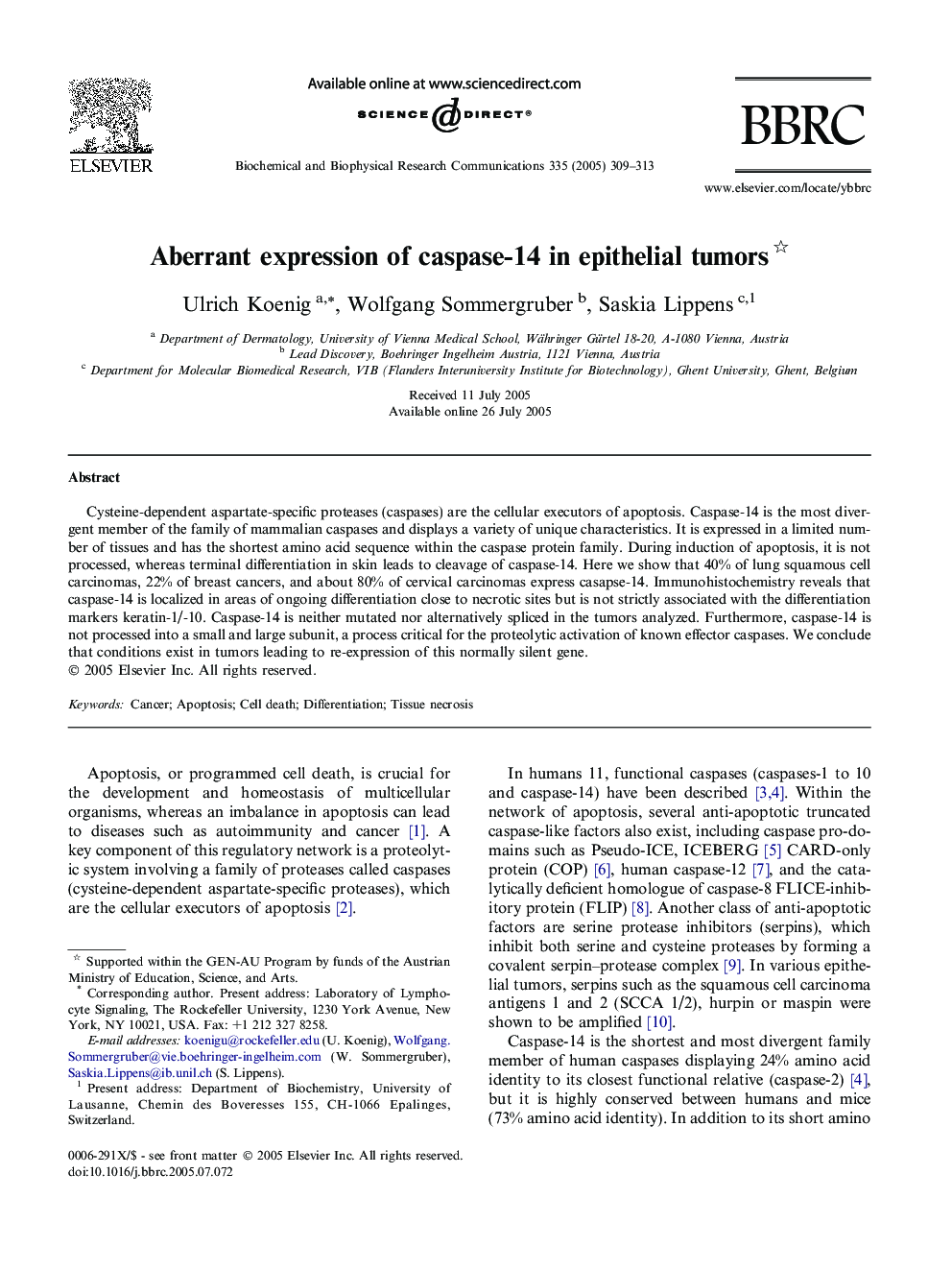| Article ID | Journal | Published Year | Pages | File Type |
|---|---|---|---|---|
| 10768030 | Biochemical and Biophysical Research Communications | 2005 | 5 Pages |
Abstract
Cysteine-dependent aspartate-specific proteases (caspases) are the cellular executors of apoptosis. Caspase-14 is the most divergent member of the family of mammalian caspases and displays a variety of unique characteristics. It is expressed in a limited number of tissues and has the shortest amino acid sequence within the caspase protein family. During induction of apoptosis, it is not processed, whereas terminal differentiation in skin leads to cleavage of caspase-14. Here we show that 40% of lung squamous cell carcinomas, 22% of breast cancers, and about 80% of cervical carcinomas express casapse-14. Immunohistochemistry reveals that caspase-14 is localized in areas of ongoing differentiation close to necrotic sites but is not strictly associated with the differentiation markers keratin-1/-10. Caspase-14 is neither mutated nor alternatively spliced in the tumors analyzed. Furthermore, caspase-14 is not processed into a small and large subunit, a process critical for the proteolytic activation of known effector caspases. We conclude that conditions exist in tumors leading to re-expression of this normally silent gene.
Related Topics
Life Sciences
Biochemistry, Genetics and Molecular Biology
Biochemistry
Authors
Ulrich Koenig, Wolfgang Sommergruber, Saskia Lippens,
